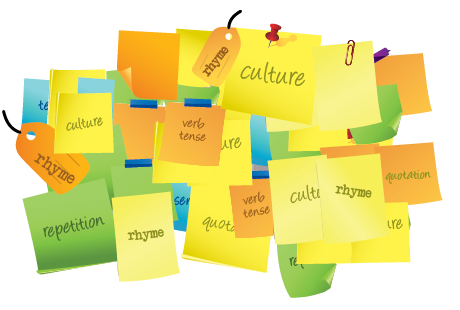Social reading allows a group of users to annotate the same text together and to share their annotations with each other. Collaborative online annotation offers a new kind of reading experience: instead of making notes in the margin of a book, readers can now share their reactions instantaneously and build a body of commentary about a text together. Social reading activities may be done synchronously or asynchronously, depending on the task and circumstances.
“Turn Any Book into a Digital Classroom” (Subtext, iPad application)
Subtext is a free iPad app that allows classroom groups to exchange ideas in the pages of digital texts. You can also layer in enrichment materials, assignments and quizzes—opening up almost limitless opportunities to engage students and foster analysis and writing skills. Watch video »
“With Social Reading Books Become Places to Meet” (The Chronicle of Higher Education)
Online, a book can be a gathering place, a shared space where readers record their reactions and conversations. Those interactions ultimately become part of the book too, a kind of amplified marginalia.
“What I Really Want is Somebody Rolling Around in the Text” (New York Times)
The digital book — scentless, pulp-free, antiseptic — seems like a poor home for the humid lushness of old-fashioned marginalia. You can’t even write by hand in an e-book — at least not comfortably, not yet. As John Dickerson recently put it on Slate, describing his attempt to annotate books on an iPad: “It’s like eating candy through a wrapper.” Although I’ve played with Kindles and iPads and Nooks, and I like them all in theory, I haven’t been able to commit to any of them. As readers, they disable the thing that, to me, defines reading itself. And yet I’ve continued to hope that, in some not-too-distant future, e-reading will learn to take marginalia seriously. And it looks as if that might be happening right now.
“Text Annotation” (Wikipedia)
Although reading itself is often a solitary experience, taken more broadly, reading can nevertheless be viewed as a very social activity. From individuals sharing their perspectives in a book club to students discussing a particular passage in class, reading often involves a significant social component. Furthermore, even if readers do not engage in such explicit social behavior, they will often carry out a conversation with the text itself, such as questioning an author’s argument or agreeing with a particular section. In one sense, annotations may be considered the currency of such interactions. As previously mentioned, such annotations generally remain private in today’s society, since most readers purchase their own copies of books. Fortunately, thanks to developments such as the Amazon Kindle’s Public Notes feature, which allows users to share their notes with friends, “one of the last bastions of the printed era to be digitized – reader data – is now breaking free of its margins.”





